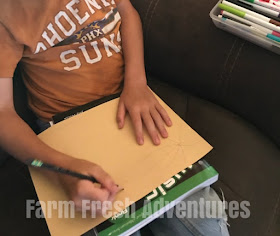About the Product
Zeekok Publishing is an award-winning publisher of a wide range of materials for music, history,
economics, and more! One of their top curricula is their Great Musicians series. They have now expanded on the series by offering a complete Music Appreciation curriculum to expand the series. They currently have Music Appreciation Book 1: for the Elementary Grades which covers the first seven composers using an activity book and lapbook.
Zeezok released the second part of the two-year program with the Music Appreciation Book 2: for the Middle Grades collection. This introduces seven more composers with a double book focus on Chopin and Tchaikovsky. This collection comes with the composer biographies and the student activity book. There is the additional option of adding on a lapbook or coloring book for the younger learners. The student activity book also gives the information for creating a journal and accessing the online components.
The composer biographies included in this collection are:
Frederic Chopin, Early Years
Frederic Chopin, Later Years
Robert Schumann and Mascot Ziff
Adventures of Richard Wagner
Stephen Foster and His Little Dog Tray
The Young Brahms
The Story of Peter Tchaikovsky
Peter Tchaikovsky and the Nutcracker Ballet
Edward MacDowell and His Cabin in the Pines
The biographies are the key component to this curriculum, and the student activity book coordinates with it. Every page in the activity book is hole punched and perforated. You would need one student activity book for each student, but there is the option for getting a coordinating coloring book or lapbook for younger students working through this with older students.
The student activity book works with different types of learning styles and covers a wide variety of subjects including topics ranging from history (the US and World), grammar, geography, music studies, timelines, character trait studies, cultural lessons, and so much more.
Our Thoughts on the Product
This is not our first experience with Zeezok. We were able to review the Music Appreciation 1 collection last year. This allowed us to know a little bit more what to expect and allows me to compare the two levels adequately.
Both levels use the biographies as the “text”. Both use the workbook as the main curriculum. Both of the programs are geared for a wide age range and learning abilities. Book 1 was geared for K-6, where book 2 is geared specifically for the 5-8 grade range. Together they provide a full range of music appreciation material for K-8.
The Music Appreciation Book 2 uses journaling over lapbooking for the additional activities, although it is possible to purchase the coordinating lapbook for Book 2 if you have younger students listening in. The student book clearly mentions when to complete any lapbook activities.
Every lesson is clearly explained with the full range of activities that can be done—although it is not designed for you to do every single one. The book has put stars next to the activities in each weekly lesson that are required to be completed to meet national music appreciation standards if that is something desired. Even if you only did these items you would have a full program.
 |
| Weeks 1-3 assignments. Stars note the national standard requirements |
 |
| They took turns answering the matching questions |
Because you are simply given a lesson plan with a week’s worth of activities AND because you are encouraged to treat the list as a buffet, you can cater the material to meet YOUR needs. Every week we chose to always do the reading with the comprehension questions as well as listen to any music tracks. I looked at all the material for the lessons and picked the ones that I knew the boys would like the most. I always did the Tidbits of Interest as those are little historic bits of information relating to the chapter readings. We usually did the drawing assignments and a few of the journaling assignments. The QR codes were a bit of a novelty, so they wanted to do all of the activities related to those. All the codes worked fine, except it was tricky figuring out how to scan a code without scanning the ones near it. LOL. The codes open up private links to all the music and any additional resource which coordinate with the material. Once the boys discovered they actually were familiar with a large number of Stephen Foster songs, they started singing them everywhere. We also heard them on older cartoons like Looney Toons and Tom & Jerry.
We finished the activities by taking the Stephen Foster quiz. I had my oldest try the online version, while my youngest filled out the student worksheet version. Now that they have done it, I would switch that around as the online version is all multiple choice or true/false which is what my youngest does better with. They both scored well—my youngest got 19/23 correct on the paper version, while my oldest scored 18/20 on the online version.
 |
| Filling out the paper quiz version |
 |
| One question from the online version |
 |
| Wrote their thoughts of listening to each folk instrument |
 |
| Drawing their favorite 4th of July activities (Foster's birthday was July 4th) |
While we focused on Stephen Foster, I did look over the other composer studies. I really like that they split Chopin into a double study--early years and later years. There is a fun recipe for Poppy Seed Cake in his biography pages. I also spied some awesome basic music theory included in the Chopin composer activities which I'm definitely revisiting at a later time. Robert Schumann teaches about the orchestra and conductors. I love that they include EIGHT recipes with a German flare. The study of Richard Wagner gives information about the use and function of music in our society and in the cultures of the world. Also included in his study is a list of musical career options which is pretty cool to add. The Brahms composer study includes an excellent analysis of the components of music and activities to learn more about the expressive elements of music. Students even are given the chance to compose their own music in this section. Tchaikovsky explores the visual connection with music as it discusses his most famous ballet--the Nutcracker. The final composer is Edward MacDowell, another American composer. This study has a portion dedicated to how to LISTEN closely to music, a crash course of Impressionism, and teaches how to evaluate music according to our likes/dislikes. This shows you the variety that is included in this curriculum.
I asked the boys their likes/dislikes:
Youngest (Age 9): I liked the books and the story. I liked the different instruments and scanning that weird symbol. I knew a lot of the songs but didn’t know he wrote them! I love Old Susanna!
Oldest (age 13): I liked that you didn’t make me read the book. That would have been a lot of reading. I think it was interesting and that it was so easy for him to make quick little songs. I think he respected the music of the people in slavery and never made fun of them like some people think he did. It’s too bad he didn’t live a long life. I really liked discovering that a lot of the songs I’ve known since I was little were actually Stephen Foster songs. They also use a lot of his songs on cartoons.
I have a mixed relationship with this material. On one hand, I like that it is very versatile and adaptable to whatever your schooling style. I like the wide range of activities available and the cultural tidbits included. BUT. I’m not a fan of this workbook being NON-reproducible--it clearly states that reproduction of the workbook is a copyright violation. I have two children so we simply took turns filling out the papers. It would be too pricey to purchase a book for each one. The collection we reviewed is $166, but I’d need an additional workbook to really use this without them sharing a book, which adds ANOTHER $60 to the price! That’s a big nope for our family. At best, I could add a lapbook which is in the $16 range.
I’d LOVE to see a digital option made available for the student book for the larger families who may want to use this material. Or simply allow the family the right to copy from the workbook for their children.
So would I recommend this product? Yes, with reservations.
The material is excellent for the well-rounded music appreciation course it provides. You learn about not just the composers but the geography, culture, and other aspects of their period. It is very open and go and easy to schedule into a lesson plan. Combined with book one, a student would get two years of intense study into a composer as well as people, places, and events around him.
BUT
It doesn’t work for anyone who wants to make a full course of it for each of their students unless they are willing to shell out $60 extra per student for any additional books. Without being able to make photocopies of these pages, this book is a one time use only for one student which makes it hands-off for most homeschool budget-conscious families or co-ops.
Want to Know More?
For the last several weeks, we have been learning about Stephen Foster, one of the seven composers included in the Music Appreciation Book 2: for the Middle Grades from Zeezok Publishing. There are seven other composers to explore and I hope you will visit my fellow crew members to see what they opted to learn about!
Facebook:
https://www.facebook.com/zeezokpublishing/
Twitter:
https://twitter.com/ZeezokPub
Pinterest:
https://www.pinterest.com/zeezok/
YouTube:
https://www.youtube.com/user/ZeezokPublishing
Instagram:
https://www.instagram.com/zeezokpub/











No comments:
Post a Comment
Thanks for checking out our Farm Fresh Adventures! I ♥ hearing your thoughts about our adventures, so please feel free to share!